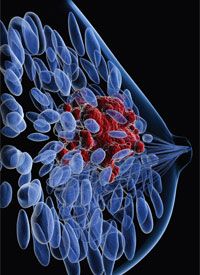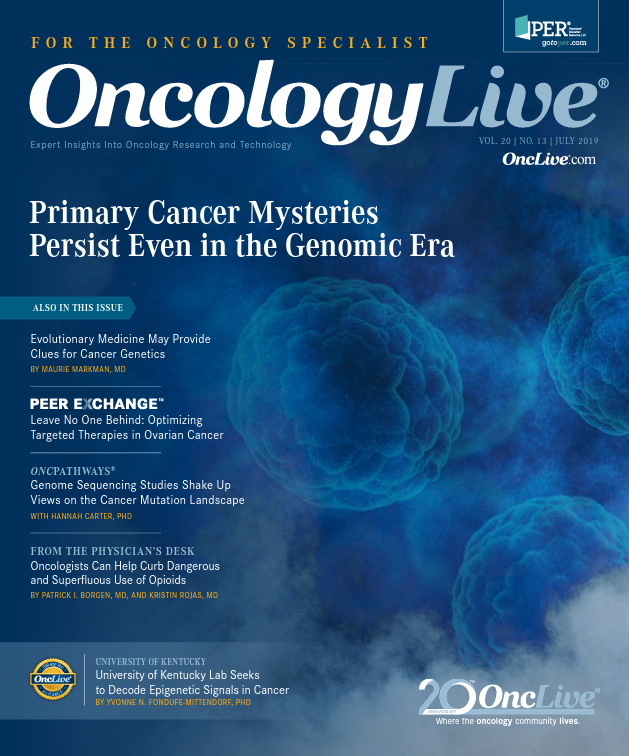Publication
Article
Higher Anthracycline Doses Linked to Breast Malignancy Risk in Childhood Cancer Survivors
Author(s):
Higher doses of anthracyclines are associated with increased risk of breast cancer in women who survived childhood cancer, regardless of whether they have mutations that predispose them to cancer.
breast cancer

Higher doses of anthracyclines are associated with increased risk of breast cancer in women who survived childhood cancer, regardless of whether they have mutations that predispose them to cancer, according to findings based on the St. Jude Lifetime Cohort Study.
For the study (n = 1467), investigators assessed the link between higher doses of anthracyclines and the risk of subsequent breast cancer in childhood survivors, observing more than a 13-fold risk in women exposed to ≥250 mg/m2 of anthracyclines compared with women who had no exposure.
Among those treated with high doses of anthracyclines, 7% and 46% developed subsequent breast cancer at 35 and 50 years of age, respectively. Meanwhile, 2% and 15% of women not exposed to anthracyclines developed secondary cancer at 35 and 50 years of age, respectively. The breast cancer risk associated with anthracyclines is similar to that observed with chest radiation (Table).
Increased risk of subsequent breast cancer was associated with having received ≥20 Gy of chest radiation (HR, 7.6; 95% CI, 2.9-20.4; P = .001) and having ≥1 mutation predisposing for cancer (HR, 23.0; 95% CI, 7.3-72.2; P = .001).
In individuals aged 18 years or older, investigators measured anthracycline-associated risk of subsequent breast cancer ≥10 years after the initial diagnosis. They also sought to determine whether surveillance imaging could improve breast cancer outcomes among cancer survivors with gene mutations linked to breast cancer. Eligible participants had a median age of 6.9 years (range, 0-22.7) at childhood cancer diagnosis and 30.5 years (range, 18.5-64.6) at evaluation.
In a subset of women (n = 139), investigators performed dual imaging comprised of mammography and magnetic resonance imaging. This was automatic for women who received ≥20 Gy of chest radiation and optional for those exposed to 10 to 19 Gy. The cumulative incidence of breast cancer by age 35 was 1% among those who were unexposed to radiation compared with 8% among those who received ≥10 Gy of radiation. The respective numbers for incidence of breast cancer by age 50 were 15% and 41%.
Among those who developed breast cancer (n = 56), 26.8% (15) received 20 to 29 Gy of chest radiation. Conversely, among those who did not develop breast cancer (n = 1411), just 9.6% (135) received 20 to 29 Gy of chest radiation. Meanwhile, 71.4% (40) of those who developed breast cancer had prior treatment with anthracyclines; conversely, 57.3% (809) of those who did not develop breast cancer had prior anthracycline treatment. Hodgkin lymphoma was the most commonly diagnosed primary cancer among women who later developed breast cancer (55.4%); just 10.1% (143) of survivors without breast cancer had Hodgkin as their primary cancer.
Table. Cumulative Incidence of Breast Cancer in Women Who Survived Childhood Cancer
Breast cancers observed by imaging (n = 33) and prophylactic mastectomy (n = 7) were more likely to be treated without chemotherapy than those whose disease was diagnosed by physi-cal findings. Thus, patients with cancers detected by surveillance would likely have less of a need for chemotherapy. Investigators said their findings confirmed dual imaging to be a focused and specific approach to identifying subsequent cancer. They recommend screening survivors treated with high doses of anthracyclines in a manner consistent with those who have received radiation affecting the breast or have a known breast cancer predisposition mutation.
Ehrhardt MJ, Howell CR, Hale K, et al. Subsequent breast cancer in female childhood cancer survivors in the St Jude Lifetime Cohort Study (SJLIFE) [published online May 10, 2019]. J Clin Oncol. doi: 10.1200/JCO.18.01099.








